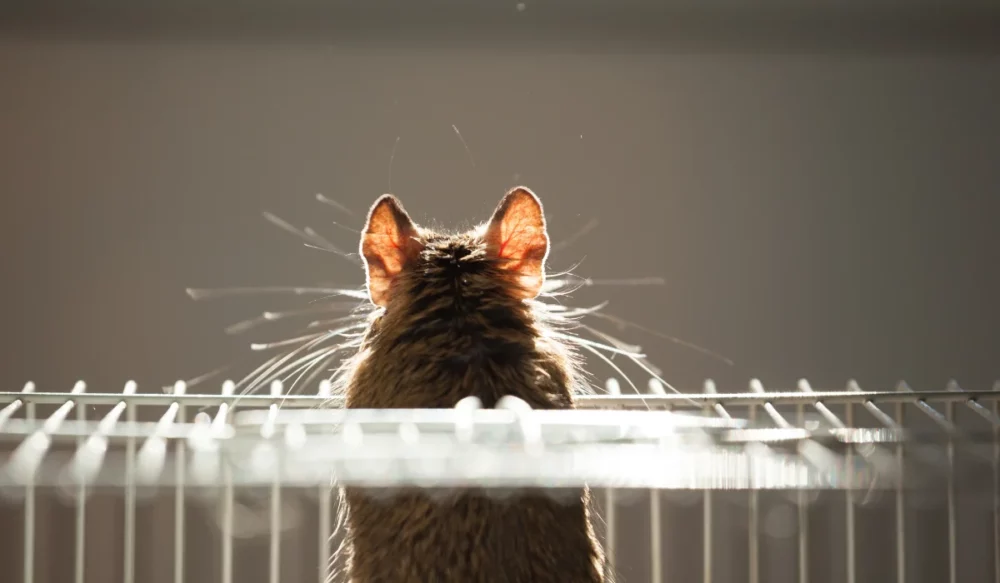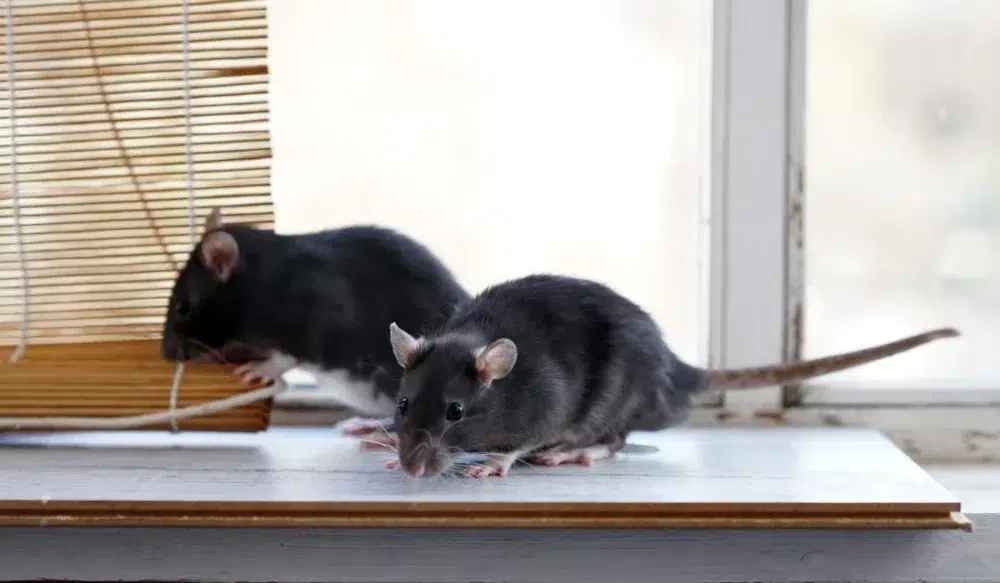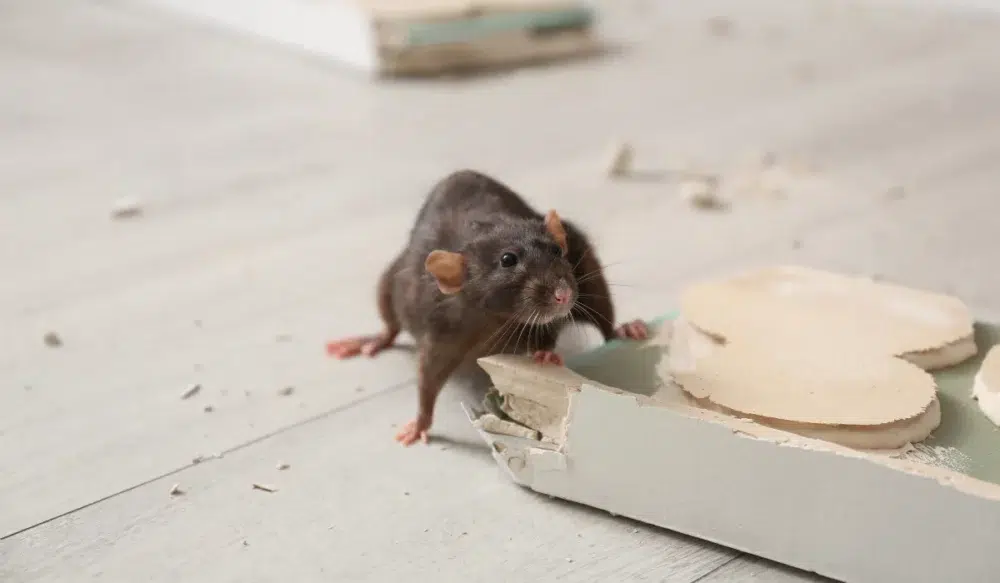Have you experienced having an invisible splinter? You feel pain when you touch things but don’t see what’s causing the problem. You rub your other fingers against the affected one, hoping to drag out the invisible object, but to no avail. You wash the finger but cannot dislodge whatever is causing the pain.
Like an invisible splinter, small things like ants can be a problem. One day there are no ants inside your home, and the next day you find a line of ants marching along the baseboard. Once ants invade your house, you begin to notice them everywhere. Soon, you see them crawling along the countertops, in the pet food, underneath the garbage can, and over food products in the pantry.
Ants in the house are annoying and problematic. Although they are tiny, you don’t want them in your home. Things have probably reached the point that you have been searching the internet because you want to know how to get rid of ants in your home. If that is the case, we have good news for you. In this article, we will supply you with the information you need so you can enjoy a home free from ants.
We will provide you with ant prevention tips and more, but first, secure from Green Home Pest Control. Our family-owned and operated company has removed ants and other pests from homes in the Chandler community since 2012. However, we don’t spray products that cause you to vacate your home, but we use eco-minded products that are safe for pets and children. Please keep reading to learn what more you can do to end the ant problem in your house.
Types Of Ants Common To The Area
Thousands of ant species exist worldwide, and Arizona is home to nearly 300 hundred, more than any other state. Many ant species live in our state, but the types of are as follows:
- Argentine ants
- Carpenter ants
- Crazy ants
- Fire ants
- Leafcutting ants
- Odorous house ants
- Pavement ants
- Pharaoh ants
- Rover ants
Identifying ant species infesting your home is necessary because of how they reproduce.
Most ant species create new colonies by producing swarmers or alates. In this scenario, the queen delivers winged, reproducing ants that fly from the nest in the spring to begin a new group.
A few ant species create satellite nests through budding. In this situation, the queen produces wingless reproducing males and females. The males inseminate the females in the nest, but the females usually do not produce offspring until the nest is disturbed. When that happens, the fertilized females and a group of sterile worker ants leave the nest to form a new nest nearby. Now that you know how ants form new colonies, let’s look briefly at the ant species that invade many Chandler properties.
Argentine ants have a 1/16 to 1/4-inch dark brown to black body. They travel in trails, are aggressive toward other ant species, and reproduce by budding. When they invade a home, they live near plants, water pipes, and moist locations.
Carpenter ants have a large 1/2 to 5/8-inch red, black, or red and black body. They spread through swarming. Pinholes in wood with sawdust-looking piles nearby indicate they are living in your home.
Crazy ants have a gray sheen to their 1/16 to 1/8-inch dark brown or black bodies, have two long antennae, long legs, and a jerky motion when moving. These ants reproduce through swarming and are known to infest appliances and cause short circuits.
Fire ants are 1/8 to 3/8 inches long and have a dark reddish brown body. Most fire ant species reproduce by swarming, but some use budding. They seldom invade homes but live in large mounds on the property.
Leafcutting ants have a 1/16 to 1/2 inch rust brown or dull brown body with paler legs and abdomen. They forage at night and use their sharp teeth to remove leaves, flowers, and fruit, resulting in harmful defoliation. They reproduce by swarming and seldom enter homes.
Odorous house ants have a 1/16 to 1/8-inch brown or black body and live in wall voids near hot water pipes and leaky plumbing fixtures. They reproduce through swarming.
Pavement ants have a 1/8-inch brown or black body and live in cracks underneath pavement and stones. Like Argentine ants, they form lines to food sources. However, unlike Argentine ants, they reproduce by swarming.
Pharaoh ants have a 1/16-inch pale yellow body with a darker abdomen. They are more problematic for health facilities than homes, where they spread disease to patients. When inside homes, they live in warm, humid areas near food and water sources.
Rover ants have a 1/16 black, dark brown, or pale yellow body covered with long hairs. They often infest mulch or leaf litter, form lines into homes, and prefer insects and high-protein foods.
Green Home Pest Control provides to eradicate these ant types (and more) from your home and property.
An Ant Infestation Is A Bigger Problem Than You May Think
No one disputes that ants inside the house are a nuisance. Ants cause embarrassment when guests are around because you feel your visitors think your home is not clean. Ants create frustration when you place pet food in their bowls, and a couple of hours later, it is filled with ants. When an ant or two crawls across your arm while you watch TV or lay in bed, you feel itchy and soon begin to think they are in your hair or other places. Adding to the nuisance factor is the odor some ants produce when crushed. Odorous house ants release a rotten coconut smell, and Argentine ants create a musty odor.
Ants are not only a nuisance; they contaminate food, cooking and eating utensils, and other items. Ants degrade products because they have tiny claws on each of the six legs. Ants are omnivores who eat protein, fat, and carbohydrates; they forage wherever these food types are present —including unsanitary locations. As ants travel through bacteria-infested areas, bacteria stick to their claws that later transfer to items in homes as they travel over them. The presence of ants inside your Chandler home means you must wash everything before using it, even if it was clean when stored (e.g., utensils).
Although all ant species contaminate items, one species, pharaoh ants, spread disease. These 1/6-inch ants have a pale yellow or reddish head and thorax with a darker abdomen. Salmonellosis, staphylococcus, clostridium, and streptococcus are some of the diseases they are known to spread, especially in medical facilities.
Carpenter ants are another ant of concern for homeowners. As the name suggests, this ant species has an affinity for wood. Unlike most ants that build nests in the soil, carpenter ants create long, smooth tunnels in damp, fungi-infested timbers for their colonies. Although they do not eat wood for nutrition like termites, their multiple, deep tunnels can weaken structures over the years. Like all ant species, when a carpenter ant colony matures, the queen produces reproductive, flying ants to create satellite colonies. What begins with a carpenter ant nest in a hollow, decaying tree stump outside the house often spreads to multiple carpenter ant nests in the crawl space and attic as the years’ progress. Long-term carpenter ant infestations may cause sagging floors, warping window and door frames, and collapsing structures.
Ant infestations outside the home can be problematic. For those who take pride in the landscaping around their Chandler house, harvester ants can destroy their efforts. These 1/4 to 1/2-inch long orange to red or brownish-black ants have a beard-like appearance from the long hair on their undersides. Because they live in the yard, they collect seeds for food, creating a bare spot around their mounds that can marr the landscape. Another issue of concern from a harvester ant infestation is their stings. Those with allergy sensitivities may experience symptoms requiring medical attention.
Although harvester ants sting, the most notorious stinging ant is the imported red fire ant. These ants create two to four feet wide flat-topped nests in the yard next to landscaping timbers, foundations, trees, and other objects. Unlike some ant nests with only one opening, fire ant nests have multiple exits; when they feel threatened or disturbed, swarms of fire ant soldiers emerge to attack. When these ants bombard their victim, they bite to anchor themselves and begin stinging repeatedly with their smooth stingers injecting venom. Soon, fluid-filled, red, itching blisters appear at the wound sites. Because of the volume of stings, some people experience anaphylactic shock requiring immediate medical attention.
Green Home Pest Control provides ant control in your house and ant control in your yard to end the nuisance, contamination, and physical and structural damage these ants in Chandler cause.
Simple And Effective Ant Prevention Tips
Green Home Pest Control ends the ant infestation in your Chandler home, but we cannot eliminate all the ants in Chandler. We would not want to eradicate all Chandler ants because they are a necessary part of our ecosystem. Ants aerate the soil, recycle nutrients, clear away dead insects, and defend plants. Plus, ants prey on termites, and no one wants those insects feasting on the wood inside their home. Although ants are beneficial outside our homes, they are not necessary nor wanted inside our houses.
Although Green Home Pest Control will end the ant problem inside your house, they are still outside on your lawn, working to keep the ecosystem balanced. To deter ants from entering your home in the future, follow these :
- Prune tree branches and shrubs away from the house
- Store and elevate firewood at least 20 feet from the structure
- Drain water from gutters away from the home
- Replace or repair water-damaged wood
- Provide proper ventilation in the crawl space, basement, and attic
- Seal cracks in the foundation, roofline, and around window and door frames
- Repair leaking pipes and plumbing fixtures
- Fix window and door screens
- Install door sweeps under exterior doors
- Cover indoor and outdoor garbage containers.
- Suction cracks and corners in the house
- Remove pet food from bowls at night
- Wipe down cooking and eating surfaces after meals
- Store food products in air-tight containers
Some of the suggestions stop ants from entering your home. Remember, ants can squeeze through cracks the width of a credit card, so sealing openings in your house with a silicone-based caulk, installing door sweeps, and fixing screens will deter them from entering.
We know that you may think it is impossible to seal every crack that could be an entry point into your home. Furthermore, foundation and roofline gaps may form due to the house settling.
Remember, ants enter homes searching for food and water, so the other half of preventing ants from infesting your home is to remove any incentive. Ants leave pheromones to alert other ants to food and water sources, but if they are unavailable because you keep the house clean, an ant or two that does find a way into your Chandler home has nothing to communicate. If an ant manages to enter your house but does not find food or water, it will exit and continue its search.
When a Green Home Pest Control technician arrives for an ant control inspection, we can provide additional exclusion and prevention tips for your situation.
Contact Us To Completely Eliminate An Ant Infestation
When ants invade your Chandler home, you want them out. The best way to end the invasion is to secure ant pest control near you from Green Home Pest Control. We will dispatch a background-checked technician to inspect your property. Our trained technician will investigate your home for entry points, attractants, and hot spots. We will also determine the ant species inside the house to develop a targeted custom removal strategy.
We use synthetic or biological organic products to treat exterior ant hills and ant colonies inside the house. We will also use these products to form a barrier around the home to discourage ants from entering in the future. Because ants constantly surround a house, our program requires an ongoing service plan.
Green Home Pest Control is the answer to your ant problem. We will protect your family and home’s structure so you can have peace of mind. Contact us to learn about our treatment programs and get your free no-obligation estimate.
Request Your Free Estimate Today
Complete the form below to request your no obligation estimate.



